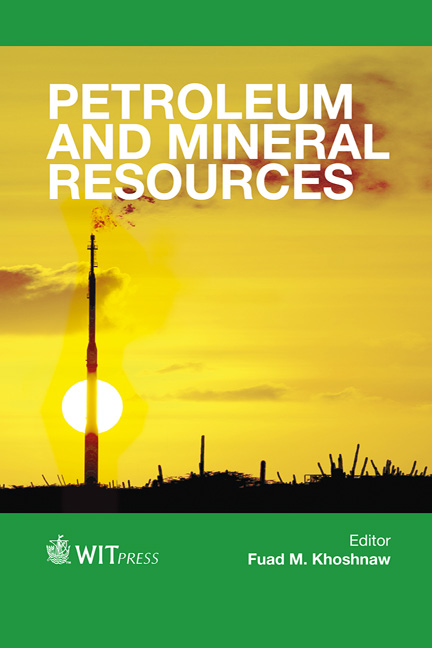An Experimental Study To Investigate Hydraulic Fracture Reorientation With Respect To The Principal Stresses
Price
Free (open access)
Transaction
Volume
81
Pages
11
Page Range
197 - 207
Published
2012
Size
2,286 kb
Paper DOI
10.2495/PMR120181
Copyright
WIT Press
Author(s)
A. Gotti, S. H. Fallahzadeh & V. Rasouli
Abstract
This study investigated the propagation of an induced hydraulic fracture experimentally. A true triaxial stress cell (TTSC) was used to apply three independent stresses of vertical, maximum horizontal and minimum horizontal to a cube of tight sandstone 100mm in size. A large stress anisotropy was applied in order to help the fracture to initiate more easily. Injection of the fracturing fluid was possible through a hole drilled at the centre of the sample which was plugged in top and bottom sections to give an openhole length of approximately 40mm in the sample centre. A pronounced notch was created in the direction of minimum horizontal stress, i.e. different than the direction at which the fracture intends to open naturally. The hydraulic fracturing tests were conducted on four different samples with different locations for the notch to investigate how the fracture would propagate from different starting angles. The results indicated that while the fracture initiates along the direction of the notch, it tends to rotate towards the maximum stress direction as it moves away from the wellbore wall. As a fracture is propagating through rock, it passes through inhomogeneities which cause a deviation in the propagation direction. The results showed that a fracture will still reorient to the direction of maximum stress after passing inhomogeneities not just at the wellbore wall, but throughout the rock. The complexity of hydraulic fracturing became apparent in this experiment as even in a highly controlled laboratory environment, some fractures propagated in directions that were unexpected. The presented results demonstrate the need for having a good understanding about the state of stresses when designing a hydraulic fracturing job for the field. Keywords: true triaxial stress cell, hydraulic fracturing, fracture propagation direction, in-situ stresses, fracture reorientation.
Keywords
true triaxial stress cell, hydraulic fracturing, fracture propagation direction, in-situ stresses, fracture reorientation.





